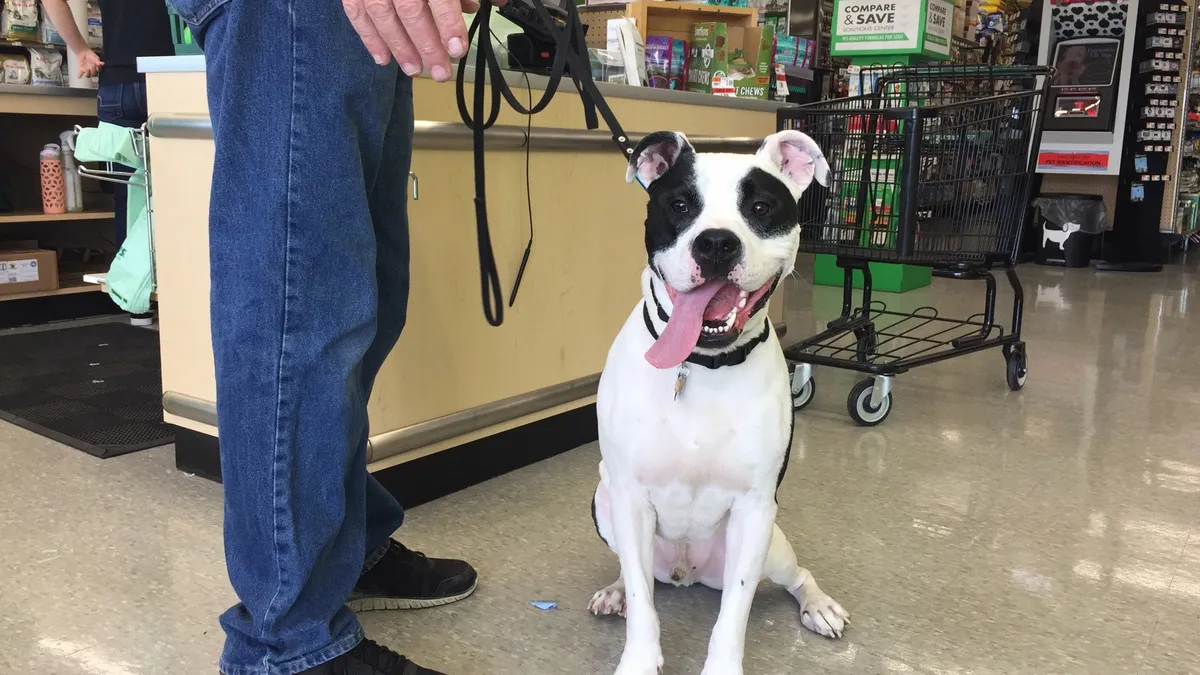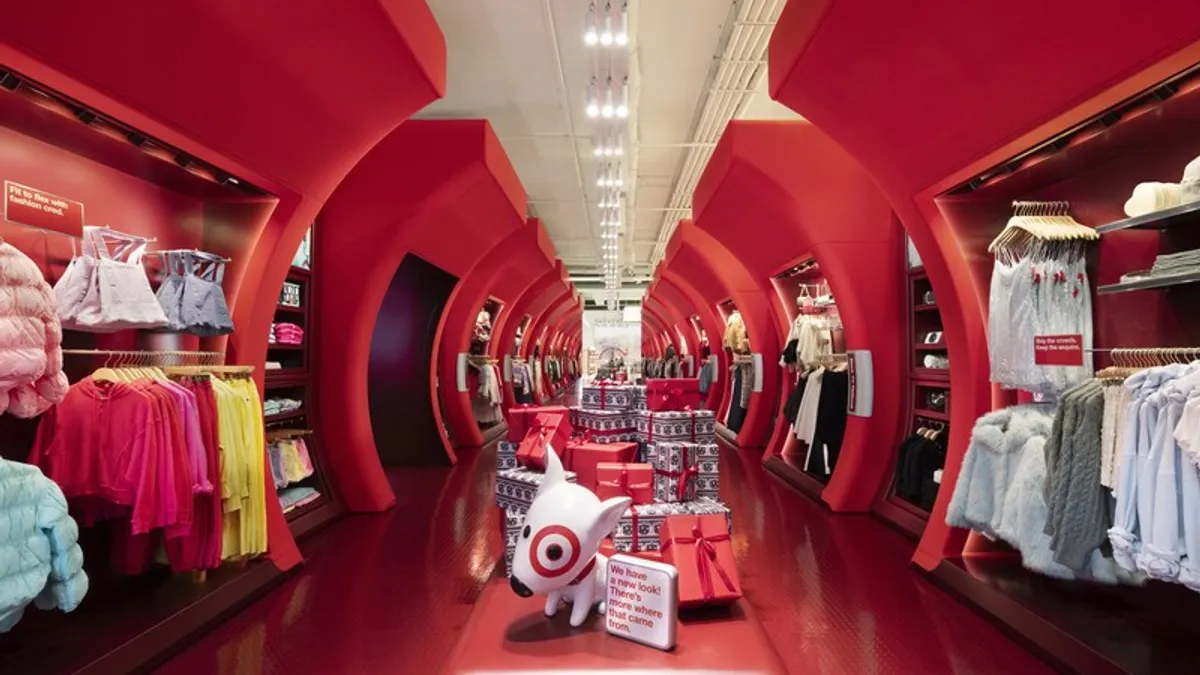There’s nothing fundamentally new about a pop-up retail store. Hustlers on New York City's Canal Street selling knockoff sunglasses and handbags, flea market vendors culling china from estate sales, even a band’s “merch" table littered with CDs and bumper stickers... all are types of "pop-up stores," really.
But in the past decade or so, pop-up retail has been honed to a near-scientific art used by chain stores, brands and e-commerce companies to test new products and ideas. For example, e-commerce retailers can provide shoppers with a rare opportunity to touch and feel their goods. And though the pop-up format does take investment and planning, it doesn't require the long-term buy-in that establishing a traditional store does.
“It’s a much more entrepreneurial component of retail,” said Jerry Hoffman, president of real estate services firm Hoffman Strategy Group. “It’s a living, breathing focus group, and it tests your mettle in terms of how you get your brand into the market, tracking where your customers live, what kind of lifestyle profiles that kind of customer might have, and how you do the outreach.”
‘Fail fast, succeed faster’
Much like the rock-and-roll band merchandise sold before, during and after a show, pop-ups are increasingly found at major events like the Super Bowl, Coachella or South by Southwest. Pop-ups like Nordstrom's festival 'pods' take advantage of multi-day gatherings of thousands of people—most in the brand’s target demographic, and many in the mood to buy.
In another variation, Kit + Ace announced in March that it is putting up a series of pop-ups in luxury hotels worldwide, featuring especially travel-friendly apparel aimed squarely at the upscale shoppers that can afford its premium prices.
But the kinds of pop-ups found in city centers or up-and-coming neighborhoods also are incubators of sorts, allowing brands or stores to trial locations, products or marketing campaigns before pulling the lever on a final idea—an opportunity to “fail fast, and succeed faster,” said Michael D. Decker, VP of marketing strategy at boutique marketing agency Medallion Retail.
“You don’t have to worry about groupthink and quantitative focus groups," Decker told Retail Dive. "If you put the concept up to test out on the street and you’re selling like crazy, you can probably assume that people are going to want your product. But you probably wouldn’t want to launch or test an effort too close to your flagship, because you risk alienating your core customers if it doesn’t work.”
Jeremy Baras—author of the book PopUp Republic: How to Start Your Own Successful Pop-Up Space, Shop, or Restaurant and founder/CEO of PopUp Republic, which helps retailers find pop-up space and develop concepts and analytics—adds that the seasonality aspect of pop-ups has diminished over time.
"Certainly there are some elements that jibe with permanent retail, too, like holidays," Baras told Retail Dive. "But even at just random times, any time of the year, pop-ups because of their temporary nature are enticing. People want to see that. Consumers crave a touch-and-feel experience that can be elusive in e-commerce."
Deep work, swift turnaround
There are a few things that retailers often don't understand when it comes to establishing a pop-up. For larger, less nimble companies, it can be difficult to make decisions as quickly as needed to take advantage of shorter leases, which can become available without much notice. Even fun, short-term retail projects, like those in trucks, shipping containers or other spaces not specifically slated for retail, require careful thought and design, said Melissa Gonzalez, chief pop-up architect at The Lionesque Group, an agency that has produced more than 100 pop-up retail experiences across the U.S.
And while decisions about location sometimes have to be made quickly, there’s a lot of planning ahead that must be done, usually without the benefit of knowing exactly what that space will be like.
“It’s often a matter of ‘Hurry up and wait’ and then ‘Hurry up again,'” Gonzalez told Retail Dive. “It’s challenging, we’re used to it, and it works as long as we have a client who can give us feedback in real time. You don’t have the luxury to have a lot of meetings because you have to move pretty quickly.”
Advance planning must be all-encompassing, experts say, including hiring the right staff. And, says Baras, it's imperative to know the goal going in. "Not all pop-ups have to be revenue focused. It could be to find out how customers interact with the brand," he said. "If you identify your objective, you can directly translate the approach to the experience that consumers have. If it's revenue, you want the higher-priced products and the right marketing. But if it's more experimental in nature, you can be more creative. Nailing that objective can ultimately make or break the consumer experience."
But even with more experimental pop-ups, retail basics don't go out the window, says Gonzalez.
“Location is important. It’s not just about getting the free spot, but the right spot,” she said. “And don’t forget staffing. Some brands put a lot of money into a pop-up and then want to staff it for $10 an hour, and that’s not going to work. Remember the store is a brand extension, and the wrong people can make or break your pop-up.”
The marketing strategy must also be in place. “You can’t just open doors and they will come, especially if you’re there for more than a day or two,” Gonzalez said.
Despite the challenges, there's a reason why e-commerce retailers and many brick-and-mortar retailers are drawn to the pop-up concept: The process has the potential to reap rich information, even well before those temporary doors ever swing open.
“The project I’m working on right now is data-driven,” said Hoffman. “It’s all about interpreting the data and looking at it in a map to identify where the households are that best represent a consumer target market. A lot of pop-ups don’t do that—that thinking about the business. It’s more than about where to locate that’s cheap. There’s a role for that optimal site location, amenable to the kind of merchandising line that your brand wants to offer.”
Where’s it going?
Hoffman says that because of the temporary nature of pop-ups, their prevalence is difficult to pin down, and metrics are scarce. As far as available space, though, the vacancy rate for regional malls fell to 7.8% in the fourth quarter of 2015, down from 7.9% in Q3 and from a peak of 9.4% in Q3 2011, according to commercial real estate information firm REIS. More generally (taking into account retail space beyond malls), the national vacancy rate is just 5.8%, says commercial real estate firm JLL.
Although the surge in available retail space triggered by economic struggles earlier this decade helped fuel the pop-up trend, falling availability as the economy has improved hasn't dampened enthusiasm. But declining property options may have helped fell pop-up startup Storefront. For the last few years Storefront has been matching retail space available for short-term lease with retailers interested in opening for as little as a week to maybe a few months, but the company recently posted a notice on its website that it has shuttered.
It’s unclear exactly what happened: Emails to Storefront were not returned by press time. Decker and others lamented the demise of Storefront, which they say provided a great service.
Clues to Storefront's fate may be found in changes sweeping across both the startup and the real estate worlds in recent months. For one thing, venture capital investment plummeted in Q4 2015, falling 30% to $27.2 billion according to VC research firm CB Insights. Plus, as the economy has improved, landlords have been able to get the longer term leases that they prefer. And in places like New York and Chicago, commercial brokers have been loathe to share business with disruptors like Storefront, Decker said.
"There's an ebb and flow in real estate, and right now it’s flowing really solidly in favor of people who own property," Hoffman said. "Businesses are doing better and increasing rents. That dynamic is most definitely going on."
But even though the real estate market has indeed tightened, and despite fewer opportunities to snag short-term leases, experts say that pop-ups will remain a popular and effective way for retailers to achieve maximum goals in a minimum of time.
"A pop-up is a fantastic test opportunity to launch a new brand, or A/B test one branding approach or another," Decker said. "There's no better research than putting a store out on the street."






















